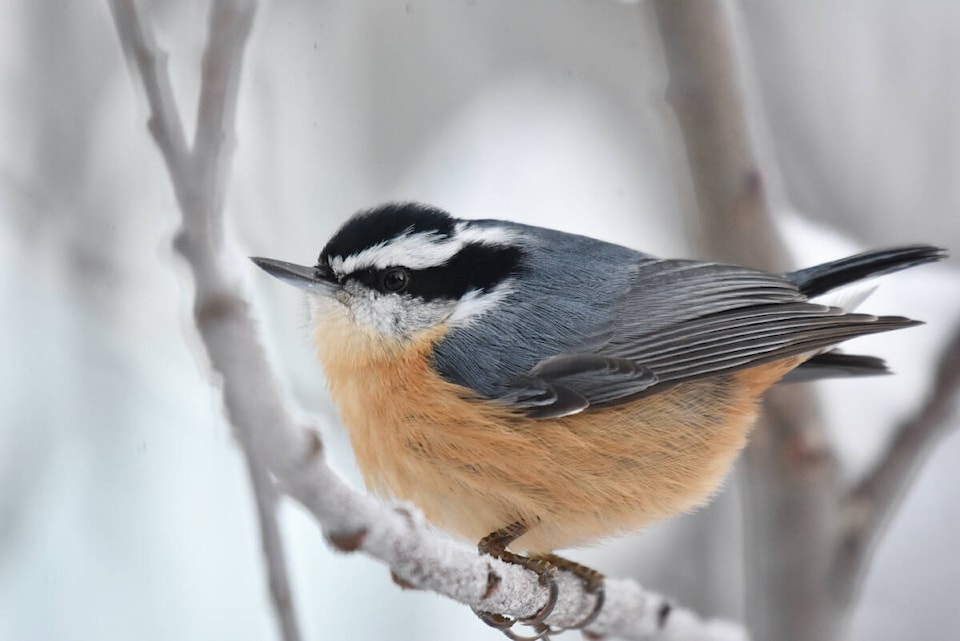The 100 Mile House Christmas Bird Count found 1,316 individual birds, despite frigid temperatures.
Bird count coordinator Paul Foth said the day of the count, Dec. 17, was the beginning of a cold snap that lasted for two weeks. Despite the -20C temperatures, 14 intrepid birders went out into the field, while three others watched their bird feeders at home.
Although more individual birds were spotted this year, the species count was down to 29, from 44 last year when it was unusually warm.
“The most common birds were ravens, American crows, Bohemian waxwings, Pine Grosbeaks and Black-capped chickadees. Those are all pretty normal for the winter and this was our highest count on record for pine grosbeaks at 143 this year,” Foss said.
Pine grosbeak tends to feed on fruit, bugs and even salt and grit from the road and are tame compared with most birds, he noted. In fact, he nearly ran a flock of them over and had to get out of his car to scare them away.
The place that proved one of the best places to find birds was the landfill off Exter Road. Ravens, crows and starlings were found in abundance as well as 27 of the 33 Bald Eagles recorded in the count. Bald Eagles are scavengers and with the waterways frozen, they seem to be falling back on the dump for food.
Foth said they didn’t encounter any birds in distress during the count as the species that are still out and about are hardy and well adapted to the cold.
One of the most unusual species spotted this year was a Black-billed magpie, found on Canim-Hendrix road by Susan Gower and Andy Karassowitsch. Black-billed magpies are rarely found around 100 Mile House, Foth said, preferring dry and warmer elevations, such as Clinton.
Waterfowl such as ducks and loons were completely absent from the count, including the American dipper usually found along Bridge Creek. Foth said the majority of those birds have flown south to warmer climates, as most of their watering holes have frozen over. Two unknown waterfowl were spotted flying southwards but were too high up for positive identification.
“If you’re doing a Christmas bird count in southern B.C., especially somewhere warmer like Vancouver Island or the Fraser Valley you get a lot of waterfowl species and a much higher species count than you get up here,” Foth said. “I was involved in counts in the Fraser Valley where we’d break 100 species.”
Foth said he’d like a few more volunteers next year to round things out. This year, he said some teams were covering multiple zones during the count. Ideally, he’d like teams to only focus on one zone, which will increase the chance of encountering more birds overall.
Anyone interested in learning more about birding or joining in on next year’s count is invited to contact Foth at gopishingbc@gmail.com.
patrick.davies@100milefreepress.net
Like us on Facebook and follow us on Twitter.
